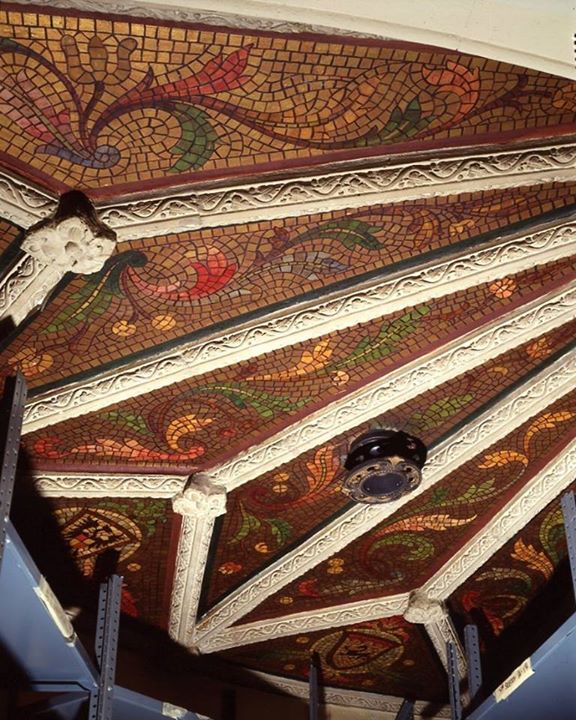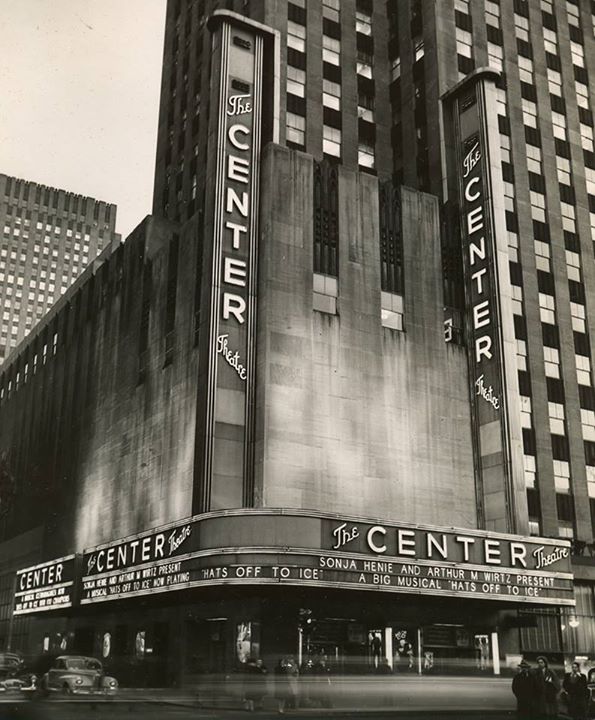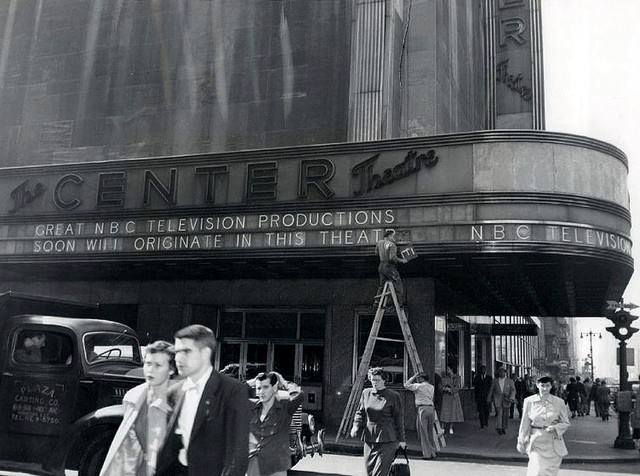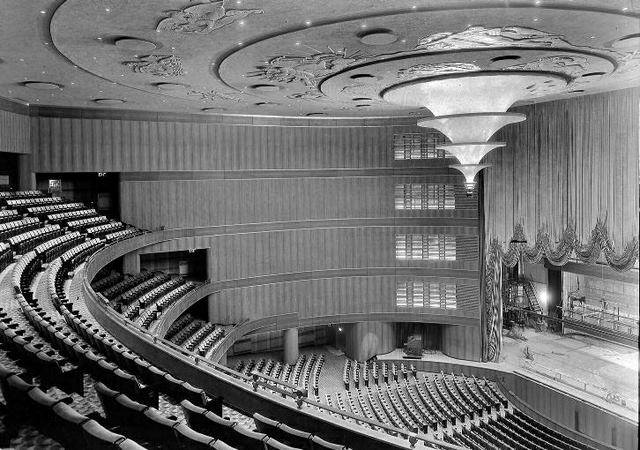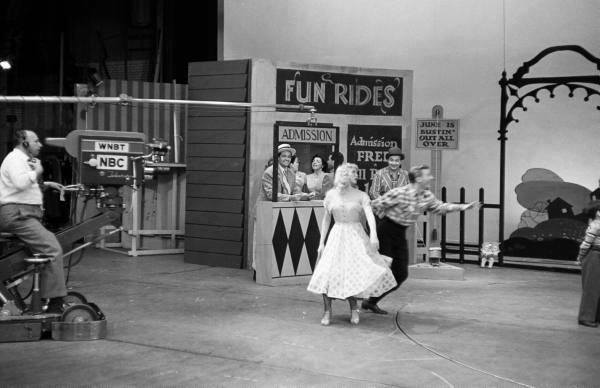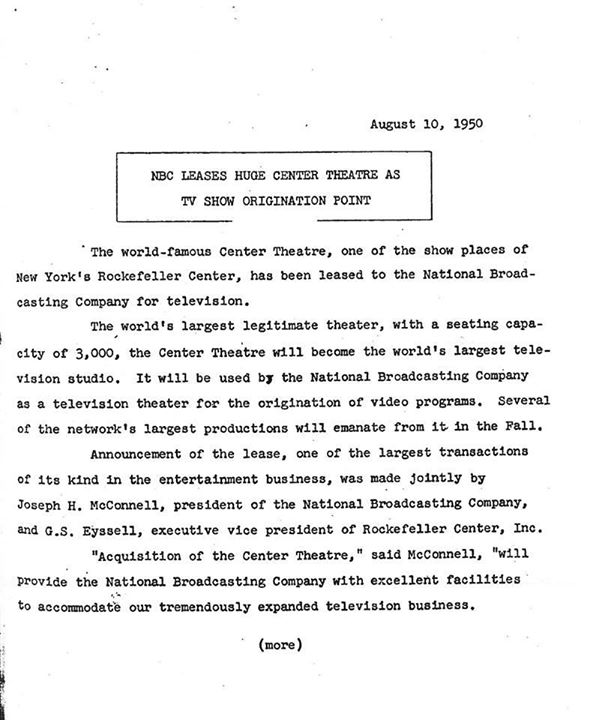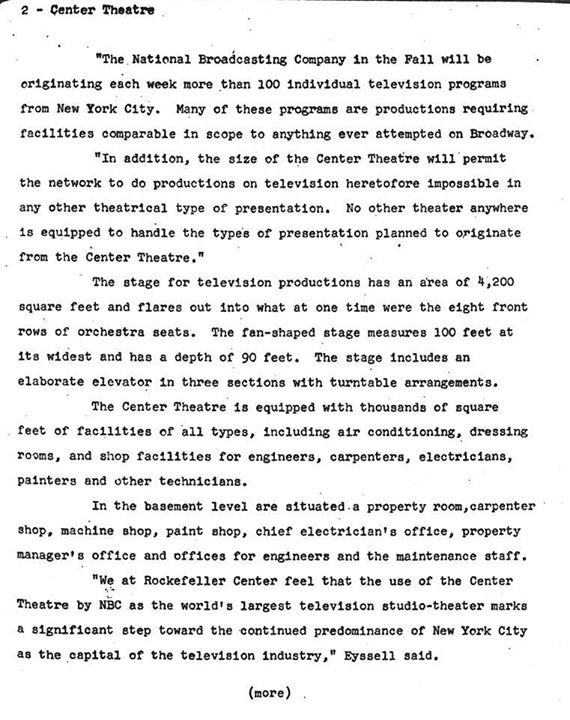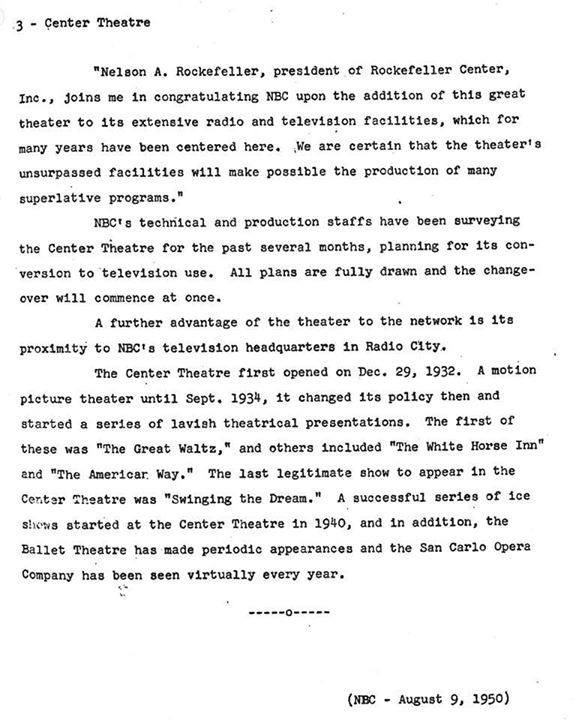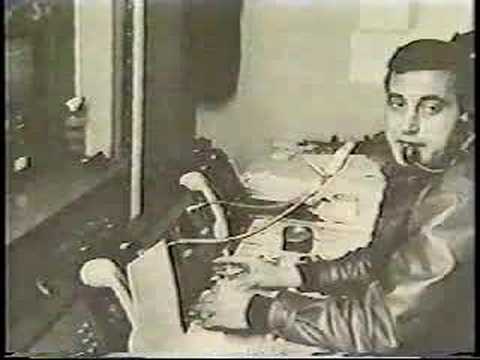

December 7, 1963…The First Instant Reply Is Shown
December 7, 1963…The First Instant Reply Is Shown
Today is the 53nd anniversary of instant reply. Thanks to director Tony Verna, football changed for the better for fans at home. Below is Sam Gardner’s Fox Sports article from the 50th Anniversay of that day AND a great NFL Sports Video. -Bobby Ellerbee
______________________________________________________
On Dec. 7, 1963, fans glued to the annual Army-Navy game on CBS watched Army quarterback Rollie Stichweh score on a one-yard touchdown run with 6:19 left in the fourth quarter to cut the Navy lead to 21-13.
Seconds later, to the bewilderment of most of the millions watching at home — Army-Navy then was what the Super Bowl is now — they saw him do it again.
This was the birth of instant replay, the brainchild of up-and-coming 30-year-old producer Tony Verna. And it was a concept so foreign to viewers, who traditionally had to wait much longer to see a play again if they saw it at all, that play-by-play announcer Lindsey Nelson had to clarify to the audience that West Point hadn’t scored a second touchdown (though Stichweh would score on a two-point conversion to make it 21-15 on the next play).
“Terry Brennan, who was my color analyst, said he almost fell off his stool when it came back; he never expected to see the play again,” Verna, now 80, said of the first instant replay in an interview with FOX Sports this week.
“And Lindsey responded to the surprise by saying, ‘Ladies and gentlemen, Army has not scored again.’ It sounded like the man had lost his mind, but you’ve got to remember and put into perspective all that was going on. He just wanted to make it clear.”
These days, a half-century after its first use, instant replay is omnipresent in televised sports, and for most, it’s hard to imagine a world without it.
The technology Verna used, a clunky, unreliable Ampex 1000 with three tape heads, is long since obsolete, replaced by newer, faster, more intuitive, user-friendly devices. And the viewer experience has seen even greater change, with slow-motion, freeze frames and split screens now the norm.
Verna’s creation is now used in officiating in most professional leagues, and it has changed the way announcers call games over the last five decades — with analysts able to visually highlight the finer points of the action, rather than simply describe it. But once upon a time, immediate playback was the hot new thing, and it was only because Verna had the nerve to try it.
“The reason for any invention is a need, and I needed something to improve my telecasting, because people at home were still not getting the full value, the cause and effect of a play, or to watch it from another angle,” Verna said. “But to show a play 10 or 15 minutes later didn’t mean anything. It had to be instant, it had to be right after the play, otherwise, you couldn’t relate to it.”
Verna’s initial thought was to unveil instant replay at the 1963 NFL championship game, but that option was off the table because NBC had the rights to that year’s game. Instead, he chose to try it at Army-Navy, a game that had been postponed for a week by the assassination of President John F. Kennedy and featured a Heisman-winning quarterback in Roger Staubach.
By that point, Verna had developed a method of identifying points on a tape using sound, putting tones on the tape’s sound track that would tell him the approximate location of the play he wanted to re-air. The only challenge from there was getting all three tape heads in sync so he could be certain he was showing the correct replay, and that it was being clearly displayed to the viewer.
Verna got permission to bring in a half-ton tape machine from CBS’ control room in Grand Central Station for the game at Municipal Stadium in Philadelphia — a challenge that, he admits, was actually simplified by the game’s postponement — and after struggling to get the three tape heads in showing the same output for most of the game, Verna finally had success during Stichweh’s final score.
“The middle head of the three would continue to show ‘I Love Lucy,’ which was the old tape that I was given to record over, so you’d see Roger Staubach, maybe, in my control room, and then you’d see Lucy and Desi in the middle, and then in the bottom, you’d see the players,” Verna said.
“It was very disconcerting, but finally in the second half, I got all three heads stabilized and I heard my (signaling) beeps come back with the frequency I needed. … I was dependent on those audio signals to tell me what was happening on the tape, and finally I got one in sync, and I heard it and I said to Lindsey, ‘This is it.’”
The news that a replay was coming wasn’t a complete shock to Nelson, who had been informed of the possibility on the cab ride to the game, but it was to virtually everyone else. Bill McPhail, the head of CBS Sports at the time, didn’t want to promote the gimmick given the solemnity of the game so soon after JFK’s death, so the fans were unaware of exactly what they were seeing.
“In those days there was no slow-motion and it was just in black and white, and you couldn’t tell the difference between tape and live at all,” Verna said. “So when the replay came back, it came back like a freight train.”
However, unfamiliarity didn’t keep viewers from enjoying the new technology’s debut, and the positive response to the first instant replay was almost immediate.
“I was still on the air, and Tex Schramm, who was then the general manager of the Dallas Cowboys, called me in the truck — he was the guy that hired me as a kid at CBS — and he said, ‘Verna, you don’t know what you’ve done; this is going to be great for officiating,’ which I hadn’t thought of,” Verna said.
“When that call came in, I had to say, ‘Tex, I can’t talk to you right now, I’ve got a hell of a game going on,’ but that was the first indication that it was a success.”
Soon after, McPhail called telling Verna that he would have to share his development with the rest of CBS’ directors and producers — a sign Verna took to mean that his creation had instantly become a necessity. He also heard from the newsroom at CBS, which lamented that Verna’s technology wasn’t available two weeks earlier, when it took them 11 minutes to turn around video of Jack Ruby shooting Lee Harvey Oswald.
On the cab ride home from the stadium, Nelson, the man who called TV’s first instant replay also put it all in perspective.
“Lindsey said to me, ‘You know, Tony, what you’ve done today is non-retractable,’” Verna recalled. “In other words, people are going to expect instant replays in games and it’s never going to go away, because it fits the sport, no matter what it is, to see it again and get some perspective.”
Verna used instant replay again at the Cotton Bowl between No. 1 Texas and No. 2 Navy on Jan. 1 — Navy lost and didn’t play in another bowl game until 1978 — and it was used during the Triple Crown, as well as the the 1964 Major League Baseball season, opening the floodgates to replay’s use across the sports landscape.
“I used to do Dizzy Dean and Pee Wee Reese’s game of the week, and (replay) allowed Dizzy to shut up,” Verna joked. “He would always talk about what you couldn’t see at home, thinking that he was giving people a boost in the viewing, but all he was doing was confusing people. Now that was taken care of.”
Verna got out of sports television in his late 40s and went on to find success in other ventures, including the production of “Live Aid” in 1985 and Pope John Paul II’s “A Prayer for World Peace” in 1987. And though he’s been out of producing for some time now, Verna continues to innovate as he ages, and has been granted recent patents on Instant Footballer and Talking Replays.
But still — despite all of the advancements made in TV production as well as his own career in the decades since Dec. 7, 1963 — Verna’s name is and will always be synonymous with that first instant replay.
“Without being braggadocio, I was given a certain ability, and I was able to use that somehow to help people in a certain way,” Verna said. “The idea of being able to watch a play again instantly is now embedded deeply into the collective unconsciousness of the viewers.
“The improvements, of course, happened, and they were expected to happen, but (the original instant replay) is like chewing gum. It’s always been there, and it’s been part of my life from that day on.”
And if that’s the legacy Verna, a south Philly kid who grew up selling programs at Army-Navy, takes with him, that’s quite all right.
“There used to be a guy named Howard Cosell,” Verna said without a hint of sarcasm. “And I would to go drinking with him and my best man Chet Forte, who ended up on Monday Night Football. We used to go drinking and Howard would say how he would go down in the annals of sports.
“Now, Howard couldn’t handle gin and he would have these martinis, and Chet knew how to put the knife into Howard, so he’d say, ‘Howard, no one is going to remember you 10 years after you’re dead. Verna they’ll always know, because he’ll always be attached to instant replay.’
“So that kind of thinking I felt good about,” Verna said. “When you create something that wasn’t there before, and you air it, that makes you pretty proud of yourself.”
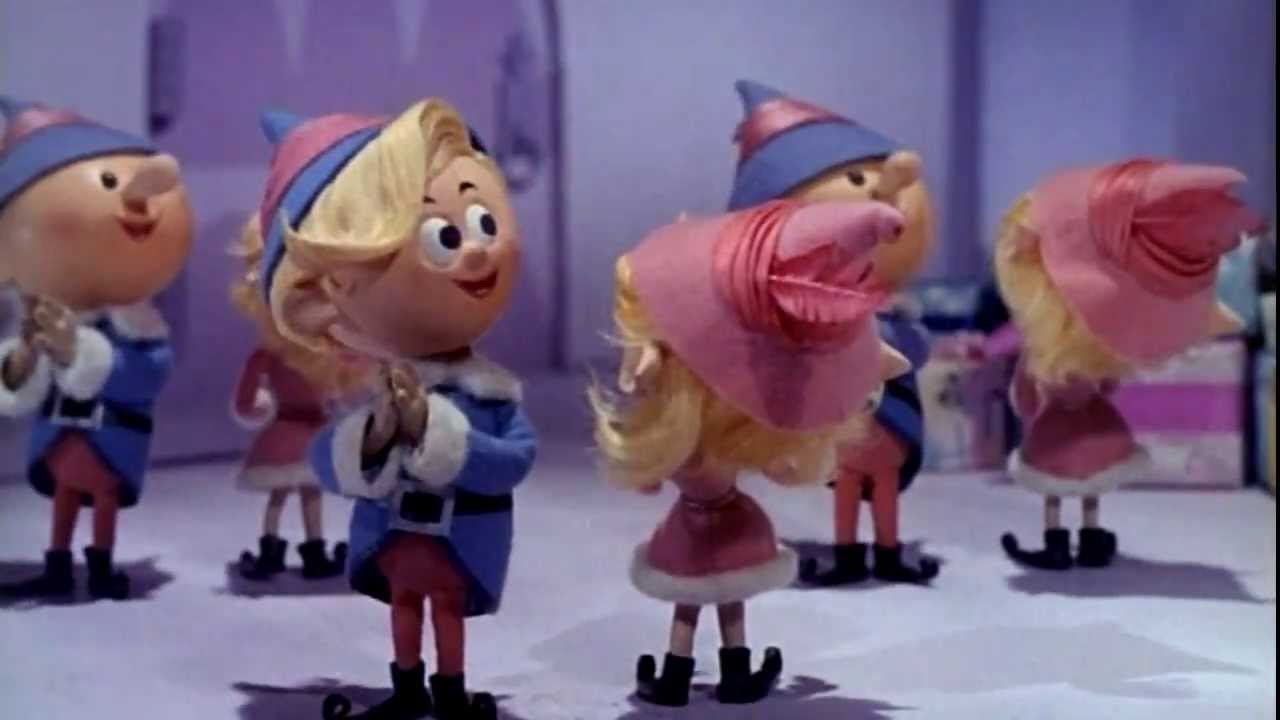

December 6, 1964…A Christmas Classic Was Born!
December 6, 1964…A Christmas Classic Was Born!
The evening of December 6, 1964, kids across the country tuned into NBC for the debut of “Rudolph The Red Nosed Reindeer” in living color. It has aired every year since.
The Christmas television special was produced in stop motion animation by Rankin/Bass Productions, and was sponsored by General Electric under the umbrella title of “The General Electric Fantasy Hour”. The GE commercials in the first two years also featured the Rankin/Bass characters. All the classic Norelco commercials with Santa riding an electric razor are based on this Rankin/Bass process and look.
At this link is a story on two surviving articulated models used in the filming of the classic from “Antiques Road Show”, where they were presented for appraisal a few years back.
https://www.pbs.org/wgbh/roadshow/stories/articles/2006/5/15/is-this-the-real-rudolph
Below, the special that we all loved as kids is ready to view! Happy Birthday Rudolph! -Bobby Ellerbee


December 6, 1948…CBS Studio 50’s Television Debut
December 6, 1948…CBS Studio 50’s Television Debut
On this day in 1948, what had been the CBS Radio Theater #3 since 1936, became CBS Television Studio 50. At 8:30 that Monday night, “Arthur Godfrey’s Talent Scouts” became the first program to be televised from the studio we now call The Ed Sullivan Theater, at 1697 Broadway.
This was the second CBS radio theater to be converted to television. In order to get the new “Toast of the Town” show with Ed Sullivan on the air on June 20, 1948, The Maxine Elliott Theater was the first transformation. Sullivan’s show, still titled “Toast of the Town,” moved from Studio 51 to Studio 50 in January of 1953. Sullivan got to move in when “This Is Show Business” moved to another night.
The first TV show to come from Studio 50 was actually a holdover from the radio days. When LIFE profiled Arthur Godfrey in 1948, his voice was ubiquitous on the American airwaves, reaching 40 million listeners each week on three different CBS Godfrey shows.
The “Talent Scouts” radio show started in 1946 and was a sort of amateur hour for young professionals. It ran for 25 minutes on Monday nights with the sponsorship of Lipton tea. During the show, the “scouts”—who could be anyone from a manager to a parent—brought out their “talent” to perform in front of a live audience. Winners were decided by an old-fashioned applause meter, with a new star declared each night. Here is a rare surviving clip of the show, with the applause meter at the end.
“He will probably be on television very shortly,” LIFE predicted, and the prophecy came true on December 6, 1948. After two years on the radio, “Arthur Godfrey’s Talent Scouts” became a regular show on CBS-TV. It was simulcast on radio from the studio it had been in those two years…CBS Radio Theater #3 which, when converted to television became Studio 50. This was the first television show to originate from Studio 50.
Ironically, the first radio show from CBS Radio Theater #3 in 1936 was the “Major Bowes’ Amateur Hour”, which the Godfrey show’s format was based on. Below, in comments, is a photo of the new TV control room. -Bobby Ellerbee
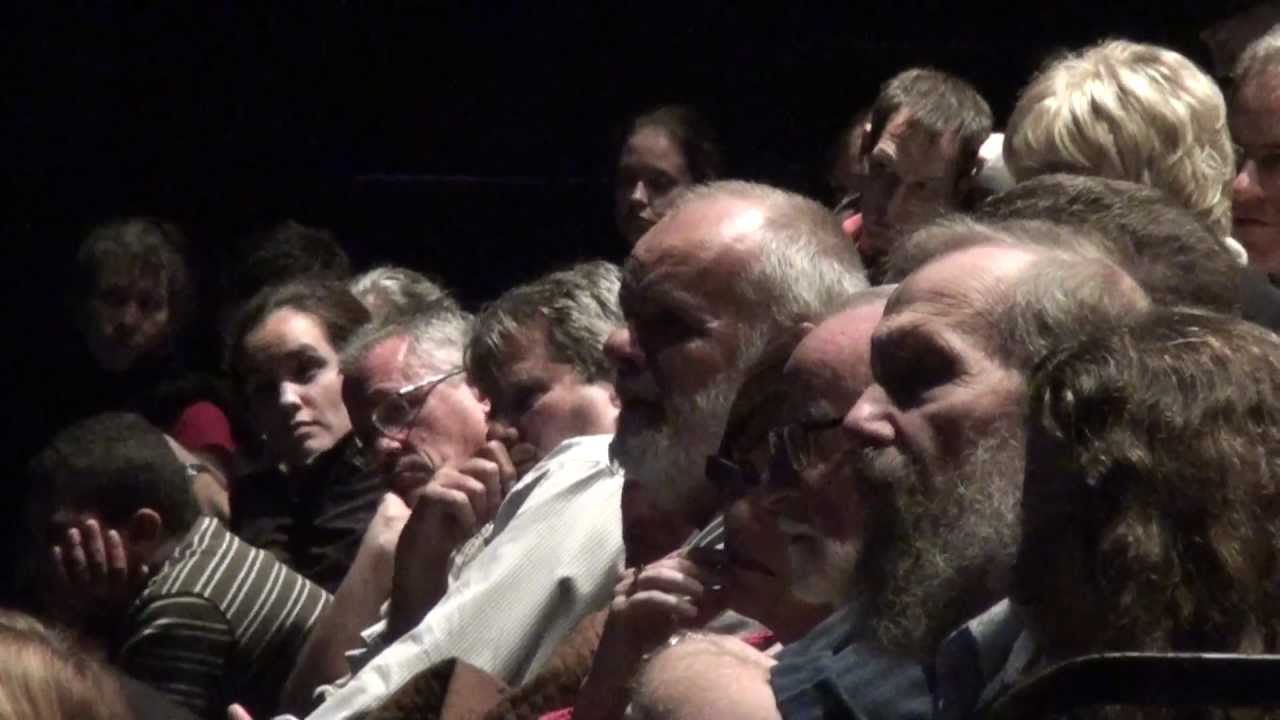

December 6, 1877…Thomas Edison Makes The First Sound Recording
December 6, 1877…Thomas Edison Makes The First Sound Recording
Edison’s recitation of “Mary Had A Little Lamb” was the first voice recording ever made, but on the tin foil cylinder it was recorded on, it is preceded by a few seconds of music, and followed by a person laughing, then “Old Mother Hubbard” and more laughing. You are about to hear the whole thing.
The video here will start just before the disc is played in public for the first time since 1879. For audiophiles, this entire video is just amazing and reveals the science behind these earliest ever recordings, as well as how they have been restored and captured digitally. The notes on the You Tube post are quite good too. -Bobby Ellerbee
The recording was originally made on a Thomas Edison-invented phonograph in St. Louis in 1878. At a time when music lovers can carry thousands of digital son…

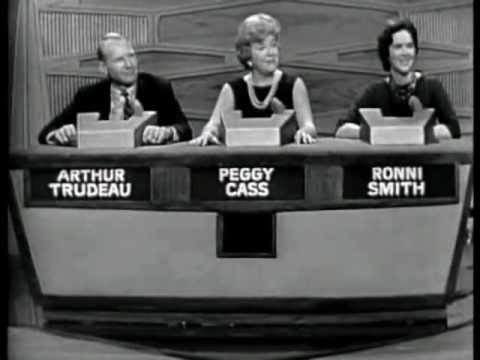
December 5, 1962…’The Match Game’ Pilot Taped
December 5, 1962…’The Match Game’ Pilot Taped
This rare unaired video was taped in NBC’s 8H on December 5, 1962 with Peggy Cass and Peter Lind Hayes as guest panelist. Gene Rayburn is the host and Johnny Olson the announcer, but as you will see, the game has changed a lot and so have the questions.
In the closing credits, many of the names of those positions that require a credit are blank, but our friend Dick DeBartolo’s name is there. Dick was the man that wrote the questions, and when NBC threatened to cancel the show with six weeks left to go on that first season, Dick saved the day.
It was his idea to change the mundane line of questions from things like “name a kind of muffin” to questions that opened up a more risque train of thought, like “Mary has a nice set of ____”. I filled in the blank with “china”…what was your answer? LOL!
‘The Match Game’ debuted on December 31, 1962 with Arlene Francis and Skitch Henderson as celebrity panelists. The final NBC episode was September 26, 1969. – Bobby Ellerbee
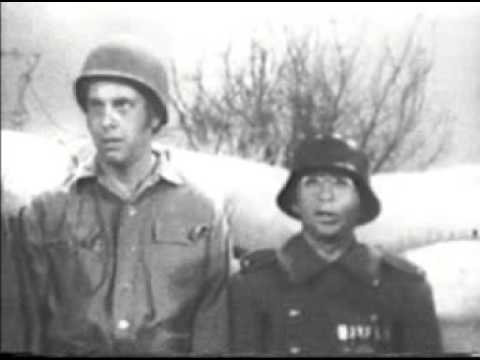
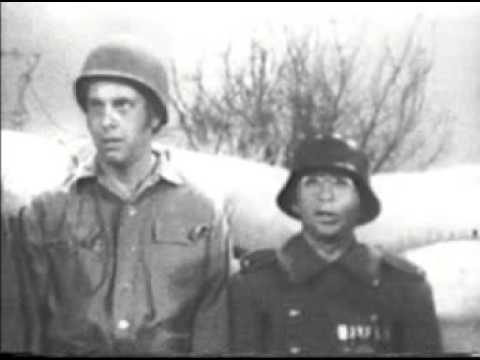
“Rowan & Martin’s Laugh In”…Three Backstories Rolled Into One
“Rowan & Martin’s Laugh In”…Three Backstories Rolled Into One
(1) Fun (2) Editing on film and videotape (3) The Editor, Art “Jump Cut” Schneider
There is not a better way to illustrate how “Laugh In” was done than to start with this embedded blooper reel, which will be fun and instructive at the same time. As you watch these outtakes on kinescope film, notice the man in the at 1:25 mark with Marcel Marceau (the pantomime king) is the show’s creator George Schlatter.
Believe it or not, the show was simultaneously recorded on black and white kinescope film and color video tape. Using the kinescope footage, Art Schneider (the videotape editor) and George Schlatter cut the show together the way they wanted it to be seen on the air. Only when that process was complete could Art begin to edit the color videotape.
With an average of 400 edits per episode, which no other show had ever attempted, editing “Laugh In” was in a league by itself…as was the editor. As a matter of fact, when Art left NBC after the second year of the show, it took 7 editors to replace him.
To give you and idea how hard it was to edit videotape in those days, here is Art Schneider editing with a Smith Block at NBC. The video will start at the part that features Art, but the whole thing is very good.
Below is a 1989 article from “WRAP Magazine” on Art…
For Art Schneider, A.C.E., it was one of the most memorable moments in his life. Bob Hope was taping a 1965 comedy special
at NBC and Schneider, Hope’s videotape editor since the late 1950s, was standing offstage when Hope called him out. “Most of you don’t know what goes on behind the scenes during the editing of our show,” began Hope. “We have a man in the basement … who fixes all our mistakes, and we’d like to honor him tonight with the annual Bob Hope Show Crossed Scissors Award for Jump Cutting Above and Beyond the Call of Duty”.
To many in the industry, Schneider has always been known as “Jump Cut,” the editor’s editor, racking up screen credits and awards almost since the beginning of television. As an NBC staff engineer from 1951 to 1968, Schneider edited over 500 variety shows, documentaries, music specials, series and news programs, winning four Emmys in the process. His work helped define the medium.
From the start, Schneider’s modus operandi has been to edit quickly, efficiently and seamlessly. To improve video editing in the ’50s-a cumbersome process, which involved the hand-splicing of tape, he worked with his colleagues at NBC to develop the first offline editing process as well as an early time-code system. As chief editor of the network’s “Rowan and Martin’s Laugh In” in the late ’60s, he was notorious for his organization and imagination.
“To edit ‘Laugh In’, we had to adapt the technology to our concepts and not vice versa,” says Creator and Producer George Schlatter. “At the time, video editing was primitive and considered a technician’s job. Art helped change that. It became an artistic job.”
Schneider’s ambitions once lay elsewhere. When he was 18 and a model-airplane enthusiast, he entered the University of Southern California with the goal of becoming an aeronautical engineer. He explains, however, that he couldn’t master the math required for the field. “I changed my major three times before I finally settled on cinema studies,” he recalls. “There’s not much math in that.”
Schneider soon found he had a knack for cutting film, and it was during his senior year that a professor introduced him to an NBC executive searching for a film editor. “The job they offered was simple-editing leaders onto kinescopes, but they didn’t want to spend the time training beginners how to edit,” recalls Schneider. “They wanted someone who already knew how to do it.”
A four-hour job interview led to what would be a 17-year career at the network. Although eventually he became the network’s supervising editor, he began as a “Group 2 Engineer”, hand splicing videotape and film, and operating kinescope machines and cameras because the term “editor” was not officially sanctioned by NBC until the ’60s.
Schneider worked constantly, averaging 40 to 50 shows a year and racking up such credits as 51 Bob Hope shows, three critically acclaimed Fred Astaire programs, and specials starring Judy Garland, Pat Boone, Milton Berle and Jack Benny. “My USC training in cinema really helped,” he says-particularly for specials, “which were tricky. You couldn’t just grind them out like you might on a series. The star wanted to put the best foot forward.”
In 1967, Schlatter, a former colleague from NBC’s Colgate Comedy Hour, approached him with the ‘Laugh In’ pilot. “I thought it had a funny name and a pretty thick script,” Schneider recalls, “but I said, ‘Fine, I’ll do it.’ ” The script was four inches thick, to be exact, and, at a time when 80 edits an hour for video was considered excessively complicated, Laugh-in weighed in at about 400. “It was a gargantuan task,” says Schlatter, “and ‘Laugh In’ may have been the first show on TV whose editor was recognized for the contribution he brought to the whole.”
With its quick blackouts, short sketches and zany music pieces, Laugh-in was an editor’s nightmare. Schneider, with Schlatter at his side, spent three weeks of 20-hour-a-day edits to produce the pilot. “At the end of the first assembly [which took five days], George didn’t like what he saw. He sat back and cried, ‘What have I wrought?’ ” recalls Schneider, who wound up recutting the program five times. “After the fifth, George was satisfied, but I was still bothered by something that didn’t quite click. I couldn’t sleep, thinking about it.” Then, as he lay in bed, he had an inspiration:
He would add a tag scene after the closing credits…a discarded piece of footage of Arte Johnson as a Nazi saying, “Verrrry interesting.” Not only did Schlatter love the touch, the bit became a catchphrase of the series.
In 1968, Schneider left NBC to form, with Schlatter, Burbank Film Editing (where he continued to work on ‘Laugh In’). Schneider left in 1970 to work at CFI, where he stayed until 1976 and helped develop the first CMX 300 on-line editing system. From there he freelanced on a variety of projects, including off-net hours for syndication and documentaries on pollution. In addition, he served on the board of the Academy of Television Arts and Sciences; became a member of the SMPTE education committee; and began writing (over 50 articles) and lecturing on his profession.
“To be successful,” Schneider concludes, “you have to be very, very dedicated. And you have to work your butt off.”
Enjoy and share! -Bobby Ellerbee
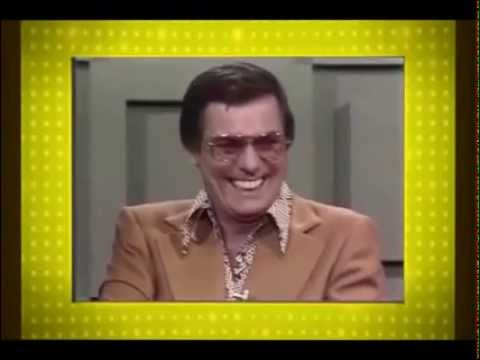
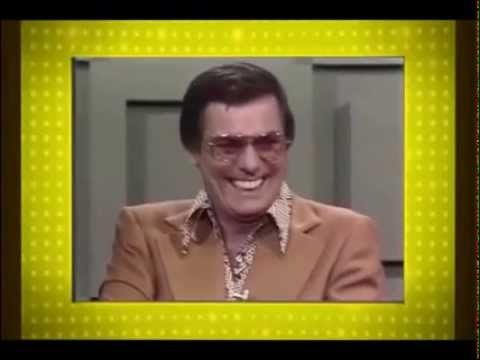
Just For Fun…Be Ready To LOL!
Just For Fun…Be Ready To LOL!
I don’t know if all of these clips made it to air or not, but I’m glad they didn’t die on the tape room floor. These are all great, but John Davidson gets things rolling, and at 3:00, Marty Allen has one of my all time favorite answers. Enjoy and share! -Bobby Ellerbee
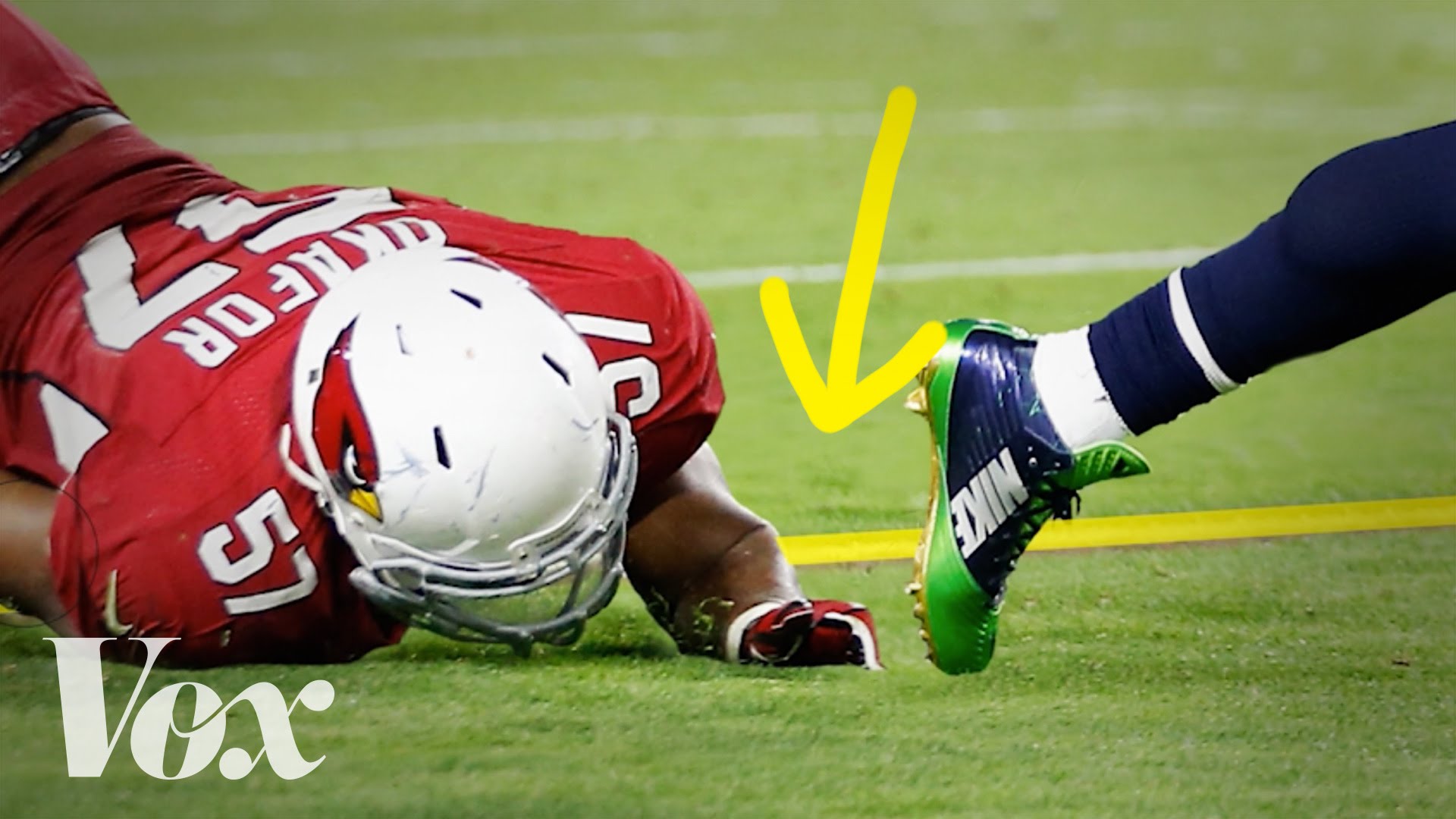
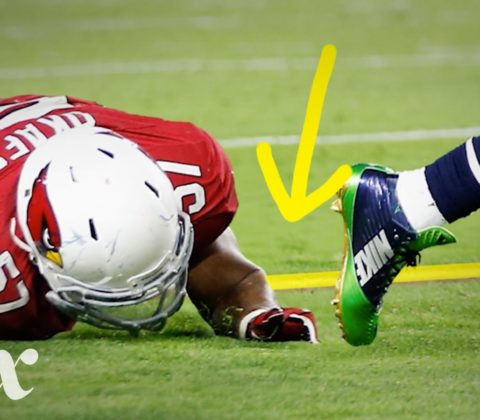
How Football’s Magic Yellow Line Technology Works…Two Videos
How Football’s Magic Yellow Line Technology Works…Two Videos
Here are two videos to lay out how the yellow first down line is applied to live action on the field. This first one is a good history and general overview of the process.
https://www.youtube.com/watch?v=1Oqm6eO6deU
This second one shows us how the equipment is linked to the cameras in the stadium and some of the software used in the truck.
https://www.youtube.com/watch?v=Vh9af_gXxlM
Hope your team wins this weekend! -Bobby Ellerbee
The clever engineering behind the virtual first-down line. Subscribe to our channel! http://goo.gl/0bsAjO — Since the late 1990s, the virtual yellow line h…


Grant Tinker, former CEO of NBC, dies at age 90
Remembering Grant Tinker….
Grant Tinker, former CEO of NBC, dies at age 90
Grant Tinker, former chairman and CEO of NBC and architect of many successes for the network, has died at age 90. He was also a former husband of actress Mary Tyler Moore.
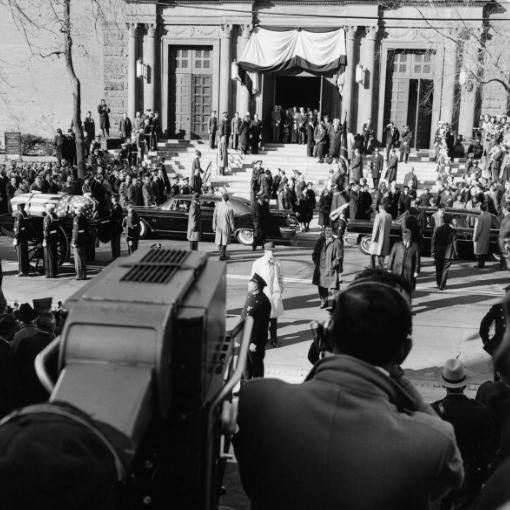

How TV Covered Death Of President Kennedy…Broadcasting Magazine
How TV Covered Death Of President Kennedy…Broadcasting Magazine
Here is the The December 2, 1963 issue of Broadcasting, which includes an article over 10 pages deep (starts on page 36) that gives us a rare look at how the networks swung into action after receiving the news from Dallas.
The main article covers many of the details and back stories of the efforts at ABC, CBS and NBC to get their news departments and crews up and running for this marathon coverage. There are also other single articles on associated stories, like “The Dimension President Kennedy Added To Television”, which is a tribute to his use of TV in all of his campaigns and in his press conferences. -Bobby Ellerbee


The Hard-Working Italian Origins of the Rockefeller Center Christmas Tree
TONIGHT! Tree Lighting At 30 Rockefeller Plaza + Some Surprises
From 8 – 9 tonight, NBC carries the holiday tradition nation wide, live from Rockefeller Plaza…well…almost live. I have been told that Dolly Parton’s performance was done months ago, but great care was taken to make it a seamless fit into tonight’s show, so keep a sharp eye out.
As for the first ever 30 Rock Christmas tree…we can thank Cesidio Perruzza, an Italian excavation worker who helped dig the foundation in 1931. Merry Christmas! -Bobby Ellerbee
Nearly lost to history are the tree’s origins with men who worked in construction, most of them Italian immigrants, who were glad for a job during the Depression.


November 30, 1927…The Birth Of Hallowed Broadcast Ground
The Original Mosaic Look Ceiling and Today’s Colbert Dome Artistry
When The Hammerstein Theater (now, The Ed Sullivan Theater) opened November 30, 1927, this black and white photo shows what the ceilings of the auditorium and lobby areas looked like. Below, you’ll see it in color!
The first nine years at 1697 Broadway were not easy, and the legitimate theater use only lasted a few years. As the Great Depression took its toll, Billy Rose took over the theater in 1933 and made it a huge nightclub, with tables and chairs where the theater seating used to be.
Finally, some stability came in 1936 when this facility became CBS Radio Playhouse #3. The first radio show from here was “Major Bowes Amateur Hour”. Ironically, the last radio show, and the first television show from here were amateur hour take offs… they were both the “Arthur Godfrey’s Talent Scouts” shows.
In the fall of ’48, in a LIFE Magazine story on his talent scout show, they predicted, “Godfrey will probably be on television very shortly,” and the prophecy came true on December 6, 1948.
After two years on the radio, “Arthur Godfrey’s Talent Scouts” became a regular show on CBS-TV. It was simulcast on radio from the studio it had been in those two years…CBS Radio Theater #3 which, when converted to television became Studio 50. This was the first television show to originate from Studio 50.
From then on, this has been home to some of the greatest talent ever seen on television. From Jackie Gleason and Ed Sullivan’s shows to David Letterman and now Colbert, all the greats have performed on this stage.
Thanks to our friend Nick Van Hoogstraten, author of “Lost Broadway Theaters,” the color image shows a small part of the hand painted mural work in 1987. Just to be clear, the “tile/mosaic” effect is painted on and is not real tile. This survived the paint overs by being inside a tape storage closet. The paint over came in 1960. The black and white photo is how the theater looked when it opened -Bobby Ellerbee
2023 ADDENDUM: Bob Valinski put in the new “Colbert Era” dome artistry and here is what he had to say about this test photo taken before the show debuted, “This is what the dome looked like in Sept 2015 when we put in an Orad engine to feed the 4 projectors aimed at the ceiling. A lot of mind bending calculations had to be used to ensure that the 4 SDI outputs line up seamlessly when projected on the 3D dome. The engine could even take a live SDI input and render to the 4 projector outputs.”

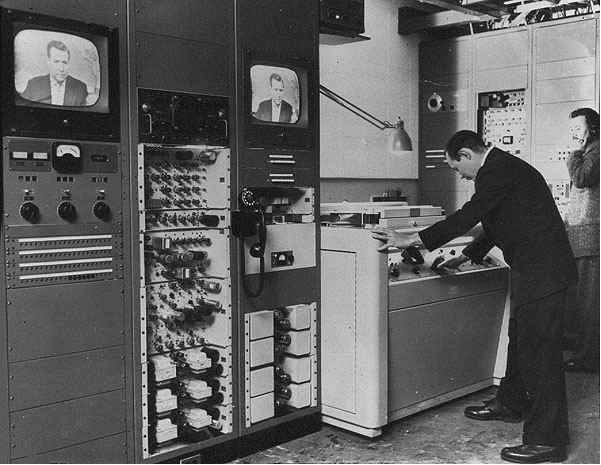
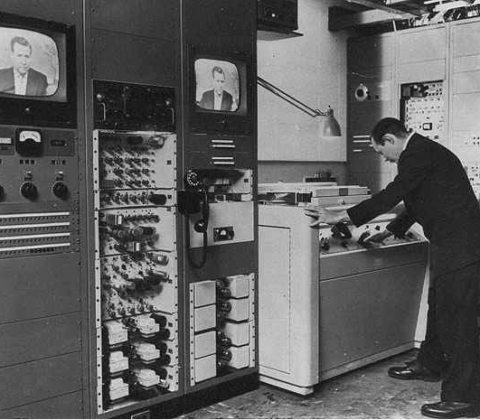
November 30, 1956…A Videotape Milestone
November 30, 1956…A Videotape Milestone
On this day in 1956, at Television City, CBS made broadcast history when they achieved the first ever videotape delay of east coast programming. The show was ‘The Evening News With Douglas Edwards’, and after recording the live feed coming down the network line from New York, the program was played back three hours later for the west coast.
In the photo, we see CBS Engineer John Radis at the Ampex VRX-1000 recording the show. Just in case, a kinescope of the newscast was rolled simultaneously, but fortunately, it was not needed.
This VRX-1000 is one of only 16 hand-built machines Ampex rushed to produce after debuting the VTR eight months before.
It would take over a year for CBS New York to get videotape machines due to a huge backlog, even though the networks got priority. In early 1958, 14 VR 1000 went into service at CBS Grand Central. NBC too had the bulk of their machines on the west coast but both CBS and NBC had two VTRs in New York which were mostly used for testing and engineering purposes.
This historic machine was retired in 1978. Early on, it had been fitted with RCA color modules as Ampex and RCA traded technology rights. RCA had developed color recording in 1954 and allowed Ampex to use it if they would allow RCA to use the Qaud recording head. -Bobby Ellerbee
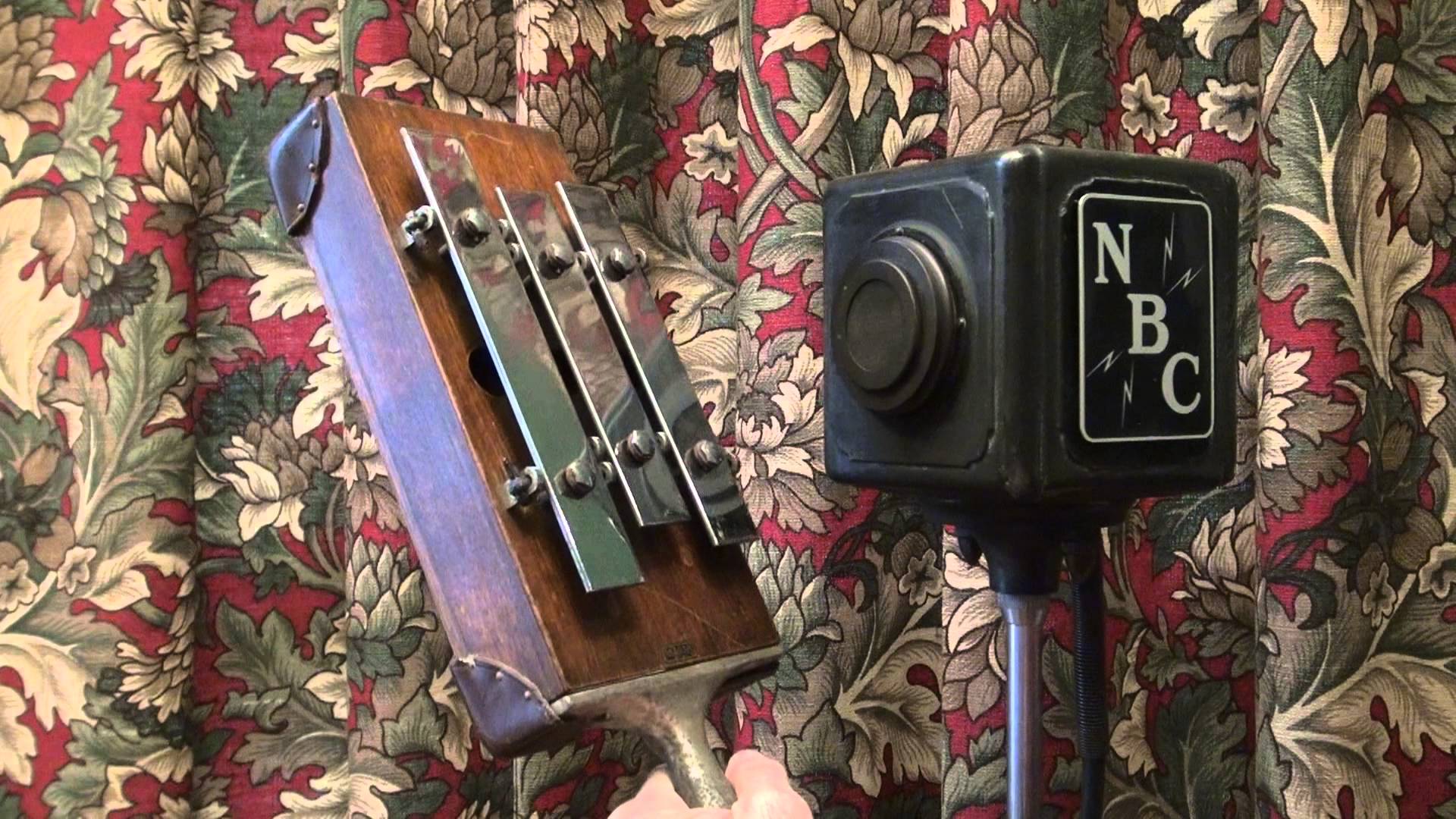

November 29, 1929…The NBC Chimes Sound For The First Time
November 29, 1929…The NBC Chimes Sound For The First Time
In July of 1921, RCA bought WJZ from Westinghouse, and five years later, in July of 1926, they bought WEAF from AT&T. The National Broadcasting Company was incorporated by RCA on September 8, 1926, and two months later, on November 15, the NBC Radio Network debuted.
The demand for a network service among local stations was mounting so rapidly, that less than two months after its first national broadcast, NBC split its programming into two separate networks…the Red (WEAF) and the Blue (WJZ) networks, to give listeners a choice of different program formats. That happened on January 1, 1927.
In those early days, at the end of a programs, the NBC announcer would read the call letters of all the NBC stations carrying the program. As the network added more stations this became impractical and would cause some confusion among the affiliates as to the conclusion of network programming and when the station break should occur on the hour and half-hour.
Some sort of coordinating signal was needed to signal the affiliates for these breaks and allow each affiliate to identify. Three men at NBC were given the task of finding a solution to the problem and coming up with such a coordinating signal. These men were; Oscar (O.B.) Hanson, from NBC engineering, Earnest LaPrada, an NBC orchestra leader, and Phillips Carlin, an NBC announcer.
During the years 1927 and 1928 these men experimented with a seven note sequence of chimes, G-C-G-E-G-C-E, which proved too complicated for the announcers to consistently strike in the correct order. Sometime later they came up with the three note G-E-C combination.
These three notes were first broadcast on NBC November 29, 1929 and were struck at 59 minutes 30 seconds, and 29 minutes 30 seconds past the hour. Now, the NBC audio logo is the most famous commercial sound in the world. -Bobby Ellerbee
https://www.youtube.com/watch?v=fnWfNZc0EtY
Degan “Studio” Chimes. Recorded through a RCA 4AA condenser microphone of the same vintage, circa 1931. The chimes were brought up to their original quality …


A Fun Look At The History of Hollywood’s Visual Trickery Processes
A Fun Look At The History of Hollywood’s Visual Trickery Processes
From 1898 till now, here is how special effects put the magic into movies like “The Invisible Man” ,”King Kong”, “Mary Poppins”, and more. From black and white matting, to yellow and blue screens, back to sodium vapor yellow and on to the green screens, we see the different processes and learn how each one worked. Enjoy! -Bobby Ellerbee
https://www.youtube.com/watch?v=H8aoUXjSfsI
Go inside the history of the travelling mattes (now called chromakey) and learn the history of visual trickery used by filmmakers from the earliest filmmaker…
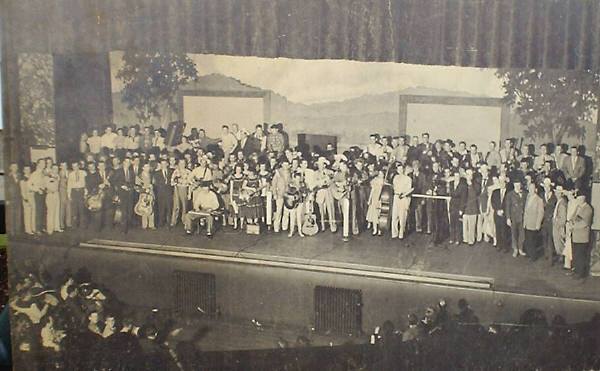
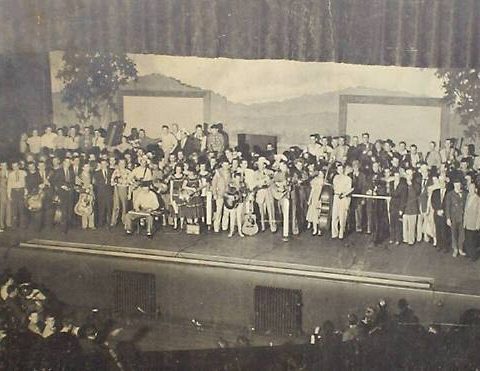
November 28, 1925…”The Grand Ole Opry” Was Born
November 28, 1925…”The Grand Ole Opry” Was Born
“The Grand Ole Opry” started as the “WSM Barn Dance” in the new fifth-floor radio station studio of the National Life & Accident Insurance Company in downtown Nashville, Tennessee on November 28, 1925.
On October 18, 1925, WSM management began a program featuring “Dr. Humphrey Bate and his string quartet of old-time musicians.” On November 2, WSM hired long-time announcer and program director George D. “Judge” Hay, an enterprising pioneer from the “National Barn Dance” program at WLS Radio in Chicago, who was also named the most popular radio announcer in America as a result of his radio work with both WLS in Chicago and WMC in Memphis.
Hay launched the “WSM Barn Dance” with 77-year-old fiddler Uncle Jimmy Thompson on November 28, 1925, which is celebrated as the birth date of the Grand Ole Opry.
The name “Grand Ole Opry” came about on December 10, 1927.
The Barn Dance followed NBC Blue Network’s “Music Appreciation Hour”, which consisted of classical music and selections from the Grand Opera genre. Their final piece that night came with comments from the conductor who stated that “there was no place in the classics for realism”.
In response to this Judge Hay quipped, “Friends, the program which just came to a close was devoted to the classics, and the host told us told us that there is no place in the classics for realism. However, from here on out for the next three hours, we will present nothing but realism. It will be down to earth for the ‘earthy’.”
He then introduced the man he dubbed the Harmonica Wizard…DeFord Bailey who played his classic train song “The Pan American Blues”. After Bailey’s performance Hay commented, “For the past hour, we have been listening to music taken largely from Grand Opera. From now on we will present the ‘Grand Ole Opry'”. -Bobby Ellerbee
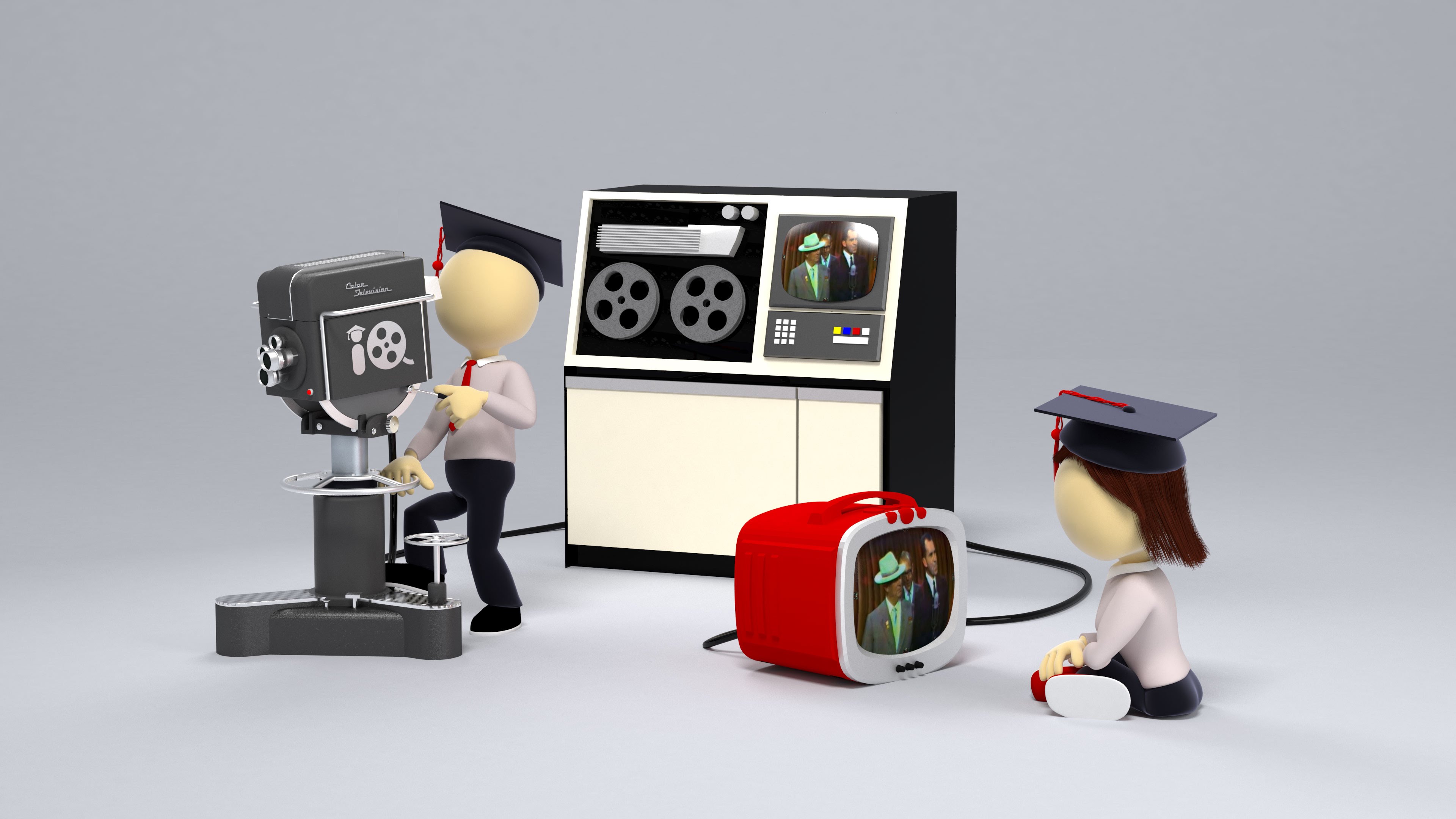

The Story Of Videotape & Editing…Part 1 (of 2)
The Story Of Videotape & Editing…Part 1 (of 2)
Tomorrow, we’ll see how digital editing works, but today…this is a great history of how television’s need for time shifting, and delayed broadcast for time zones encouraged the development of kinescope and videotape recording.
This is well done and told in layman’s terms so everyone can understand the very interesting paths the process of recording and editing video have traveled. -Bobby Ellerbee
https://www.youtube.com/watch?v=TIVYeyWHajE
Trace the history of modern day film editing – starting with electronic engineers developing solutions for capturing and editing television through to the fi…


Story Of Videotape Editing…Part 2 (of 2)
Story Of Videotape Editing…Part 2 (of 2)
Yesterday’s first installment was pretty easy to follow, even for laymen, but this lesson on digital editing is more of a challenge. This does however have an interesting timeline that reminds us of when new developments came into play.
I’m posting a second video in a few minutes that is a lot more fun…it is all about the history of special effects in film making, so keep and eye out for it. -Bobby Ellerbee
https://www.youtube.com/watch?v=dhHQw5GrwxU
We pick up the story from the electronic engineers of television in part 1, to computer scientists, mathematicians and programmers as we explore the advancem…
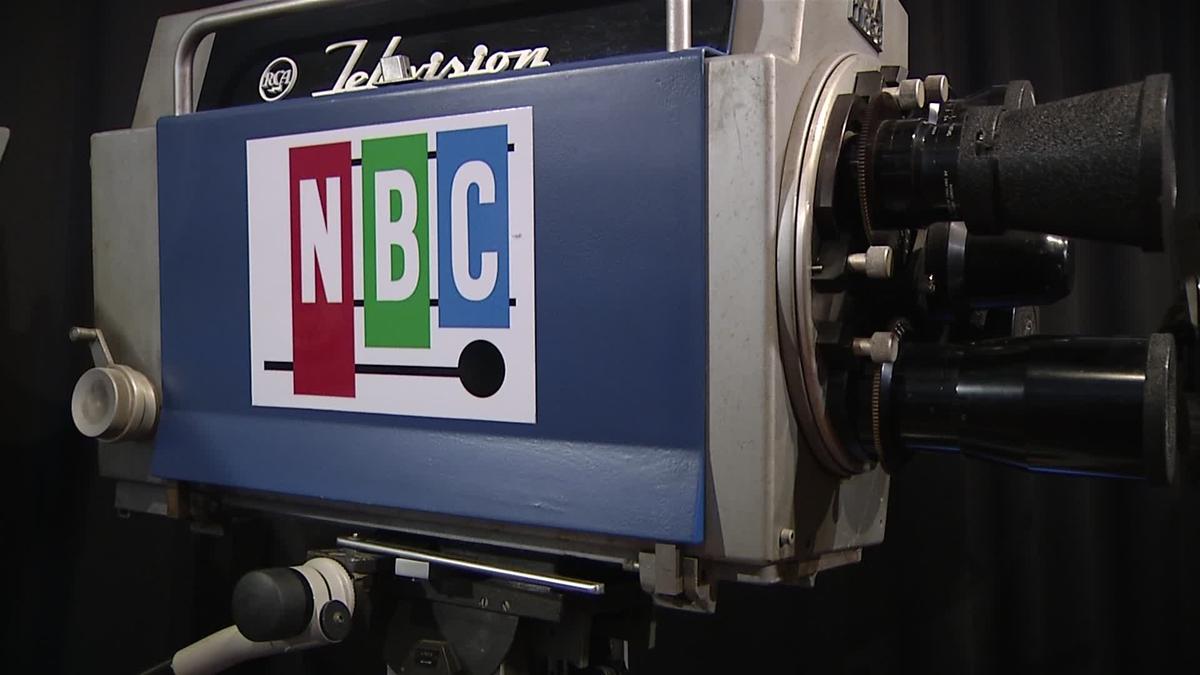

Texas Museum of Broadcasting Opens in Kilgore
My “Conrad” In Arms….Chuck Conrad & His New Texas TV Museum
Impressive in every way! From the display, to the abundance of vintage cameras and tape equipment, to the Dumont Cruiser restoration, to Chuck’s attitude, The Texas Museum of Broadcasting and Communications in Kilgore, is true gift to us all.
This is a new story from the Dallas/Ft. Worth station that many of us still refer to as WBAP, and it is the best report I have seen so far on Chuck’s labor of love. I would like to have a brick and mortar museum like this, and if I did, I would do it the way he’s done it. I chose the virtual museum route.
Later in the story, Chuck says something I can relate to 100%. When it comes to becoming a custodian of rarities, restoring and preserving our broadcast history…he says “somebody’s got to do it”.
“I think a lot of things in life are like that, when you come across things and know somebody’s got to do this, and you are the person who can…go do it”.
That is why I created Eyes Of A Generation in 2006. Congratulations Chuck! -Bobby Ellerbee
http://www.nbcdfw.com/news/local/Texas-Museum-of-Broadcasting-Opens-in-Kilgore-403062026.html
Texas Museum of Broadcasting Opens in Kilgore
“I can’t deny it! I mean I woke up one day and noticed I had over 50 TV cameras and then you go, ‘well, what am I going to do with this stuff?’” asked Conrad. His answer: open a museum.


November 25, 1950…Center Theater, World’s Largest New TV Studio
November 25, 1950…Center Theater, World’s Largest New TV Studio
The Center Theater was Radio City Music Hall’s little sister and when it was converted by NBC for television was “the world’s largest television studio”. It’s big sister seated 6,000, and while the Center seated 3,000, it was just as opulent and a block away at 1230 Sixth Avenue. It is the only original Rockefeller Plaza structure ever demolished, which happened in 1954 to make way for an office tower, built for U S Rubber.
There is some interesting information In the attached 3 page NBC press release from August of 1950 that announces NBC’s lease.
The first television shows were actually done here in the late ’40s when NBC did remote broadcasts of several of the ice shows which were performed on the Center’s specially constructed “Sonja Henie Ice Stage” . November 25, 1950 is the theater’s debut as a television studio (with it’s own control room) and the first show was a Radio/TV simulcast of ‘The Voice Of Firestone’.
I think ‘The Colgate Comedy Hour’ also moved here at the first of December, and in the last photo before the NBC Press release, you see occasional host, Broadway dancing star Wayne Lamb on stage with the Center’s large turntable in views. At this link is a 1954 episode of ‘The Colgate Comedy Hour’ live from The Center and notice the famous freezable ice stage is still intact and in use for an appearance of none other than Sonja Henie.
By 1952, ‘You Show Of Shows’, which began in the International Theater, moved to The Center for it’s last two seasons.
The first photo says it all about the location…a block up is Radio City Music Hall and between them is NBC’s 30 Rock headquarters. Just to the left of the Center’s marquee is the famous Hurley’s Bar, nestled against NBC at the corner of 6th Avenue and 49th Street. Radio City is at 50th Street. In that photo, the construction is the demolition of the elevated train tracks that once ran up 6th Avenue. -Bobby Ellerbee
